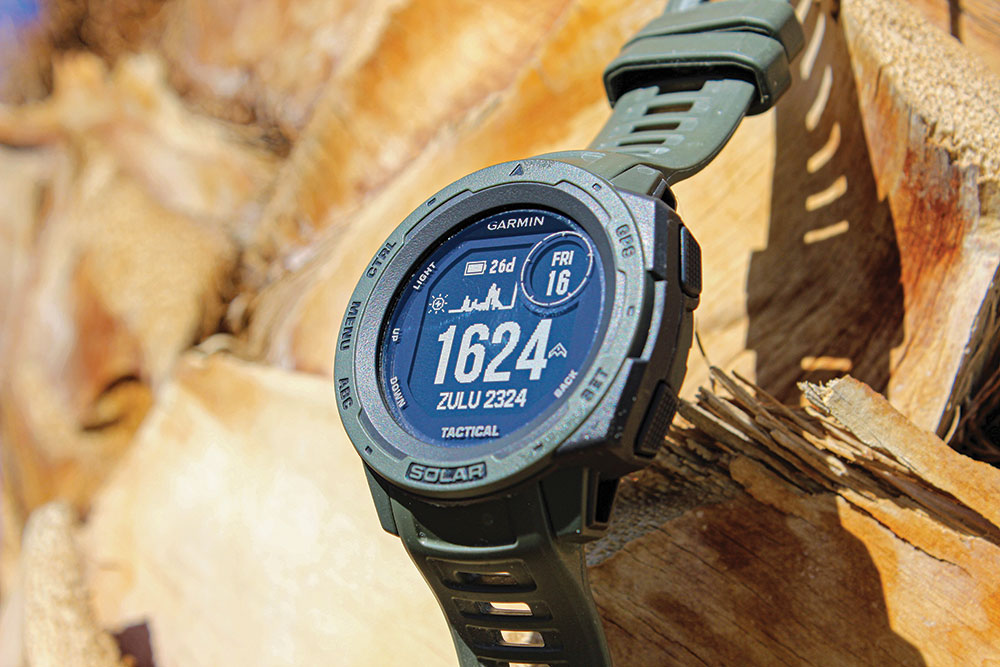Garmin’s Instinct Solar Tactical Edition smartwatch is suited for many missions.
We’ve come a long way since the pocket watch. Here’s a smartwatch to rule them all.
While society might not be flitting here and there in flying cars (yet), we do have wrist watches that can communicate with multiple satellites and give us our exact location. When GPS made it to the public (á la “Dick Tracy”), the battery life of a watch wasn’t sufficient for such a device to really be considered a viable survival tool.
The folks at Garmin have been cramming valuable features into their watches for a while now. But, with the latest version—the Instinct Solar Tactical Edition—they’ve practically eliminated the ability to get lost for long.

Being a watch enthusiast, I can “get lost” in the faces of some dreamy timepieces. The word, “horophile,” wasn’t recognized when I typed it into this article, but rest assured: To people who love and collect watches, there’s no better term to describe their passion. It’s derived from “horology,” which refers to the science of measuring time or even the art of creating time-measuring devices. I love watches, but I’ve often had to recognize the limitations of those I’ve used over the years.
Standard multiple-sensor watches relied on informing the user of altitude, barometric pressure and even direction for years, but they required the user to have decent knowledge of the terrain to maximize the value of that intel.
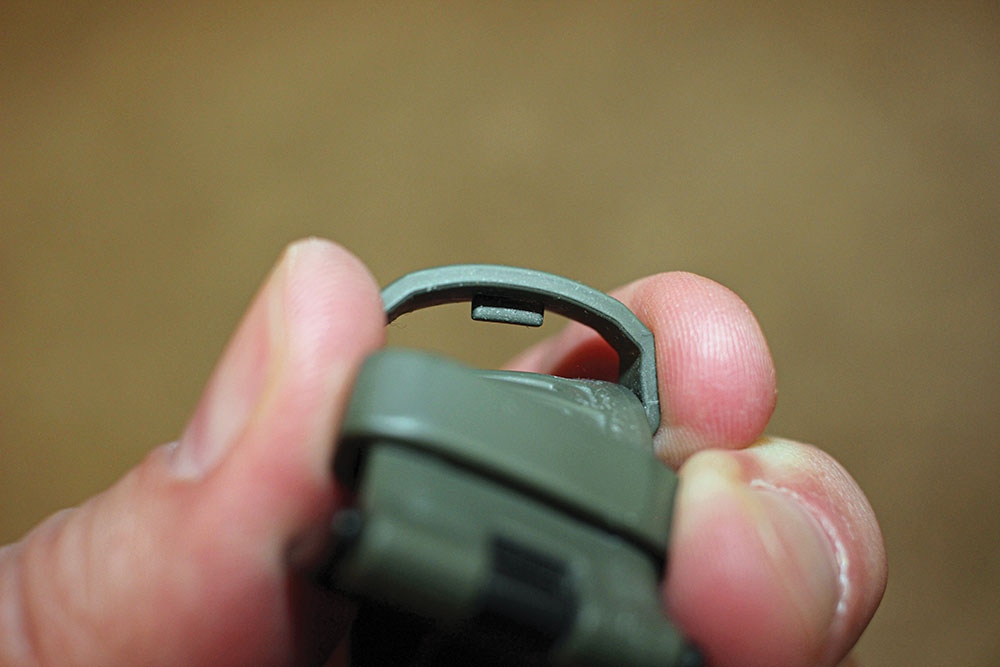
GPS was a critical upgrade, and it eventually materialized. However, the thought of having to plug in a watch every night or certainly every few days left them out of consideration for many scenarios.
Don’t get me wrong: This isn’t a “Goldilocks” story, in which I want things to be “just right”; there must be decent battery life for critical functions in order to provide true value.
The more you use nearly any device, and the more complicated the features you use, the more battery drain you experience, and the quicker your device dies.
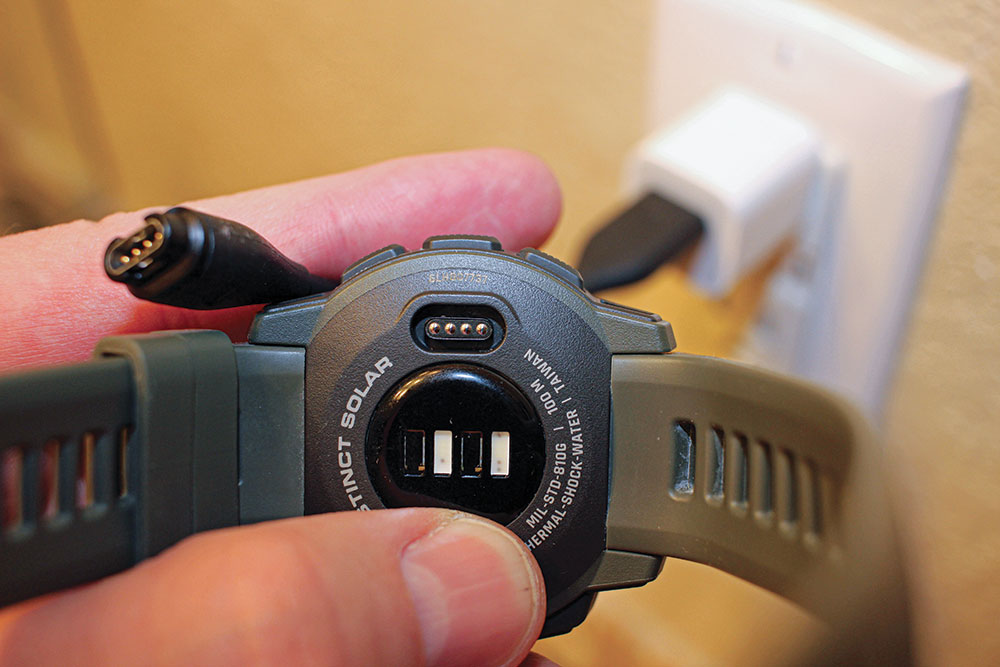
Out of the Dark
How did Garmin take an already great watch and make it better? Well, it increased the amount of photovoltaic surface area in the Instinct Solar Tactical Edition’s watch face. This allows more solar-charging power and better collection angles. In addition, the company’s GPS masters swapped out the sensor next to the skin for one that can detect pulse oximetry, as well as heart rate.
Pulse oximetry is great to know, because it informs the user how much oxygen their blood supply is actually working with. Pneumonia and other lung ailments can cause this to decrease; and once the numbers get below 90 percent oxygen saturation, it’s time to get medical help. This is potentially life-saving information.
While these two major upgrades are stellar, the Instinct already came with a host of great features that make it a very competitive value in a field crowded with “smart” watches. One of the telling design elements proving that Garmin knows its customer base is how rugged the watch is.
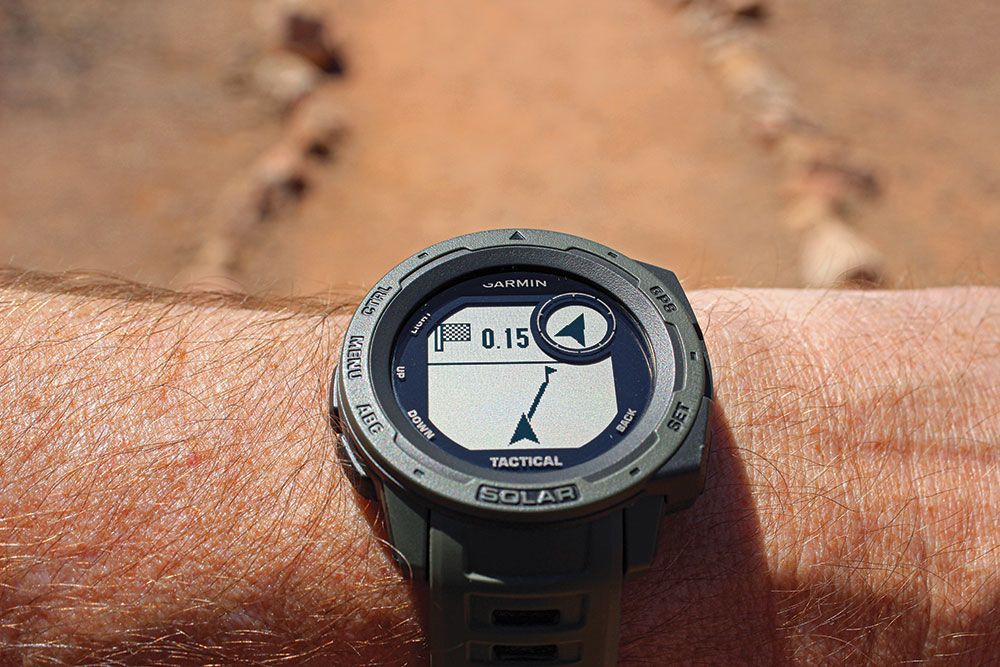
Another area that really makes the Instinct stand out is its ability to be customized, including features you can add through downloads. There’s an almost dizzying array of options to what is essentially a GPS-capable computer on your wrist. The sports apps (more on that in a bit) are great, but if you don’t see your favorite activity, you can likely add it. Widgets (tiny “applets” that provide data) comprise another option that really adds some personalized functionality. Examples of widgets are phases of the moon and current weather conditions. There’s a bunch of options, although some of these require pairing your mobile device with the Instinct.
Built for Adventure
The Instinct’s case is formed from a fiber-reinforced polymer that’s been chemically strengthened to meet the MIL-SPEC 810 standard for thermal, shock and water resistance to 100 meters. It’s 45x45mm in size, which helps with readability but won’t look huge on smaller wrists. The nonrotating bezel is raised enough to do an excellent job of protecting the Corning Gorilla Glass crystal from casual abuse experienced during daily wear.
The face is a customizer’s dream. It comes with several different, pre-determined options, as well as the ability to customize the various fields within the face. You can change information—such as the date, seconds, temperature and a wealth of other data—to organize and reflect what you want to see.

The band is made of silicone and has a wide-ranging ability to fit various-sized wrists between 5.2 and 8.8 inches with its seemingly innumerable adjustment holes. It’s extremely comfortable and easily adjusted if you want to wear it on the outside of a jacket or you want a different fit. The band also has two free loops for retaining the remaining tail of the band, one of which has a lug for keeping everything neatly in place.
Feeling Sporty?
The features available on this watch are robust and would please the most ardent lover of the outdoors.
There are sports apps that track relevant information to give you pace, step counts and distances. Swimming, hiking, biking, running—you name it, it’s in there. And, if it isn’t, you can likely download it to the watch.
“The folks at Garmin have been cramming valuable features into their watches for a while now. But, with the latest version—the Instinct Solar Tactical Edition—they’ve practically eliminated the ability to get lost for long.”
I added treadmill use as an activity, because it was still snowy out when I started testing the Instinct. These apps are very useful and help you keep track of your activities, details for which you can save and review later. If you’re trying to grow in an area, you can compare previous performance and set goals accordingly.

There are also modes that would be highly valuable for folks in certain fields (that don’t directly apply to my particular work or recreation), such as “tactical mode” and “jumpmaster.”
Tactical mode shuts down your watch’s communication with satellites, as well as connectivity with your phone, in an effort to avoid giving away your position. I imagine this would be of great use to military units that travel abroad and don’t want to tip off anyone. Jumpmaster holds huge appeal as a mode, because it automatically calculates high altitude, high opening (HAHO), as well as high altitude, low opening (HALO) scenarios, according to military standards.
Like so many digital field watches, the Garmin Instinct Solar Tactical also has an altimeter (geography based), barometer and triple axis electronic compass.
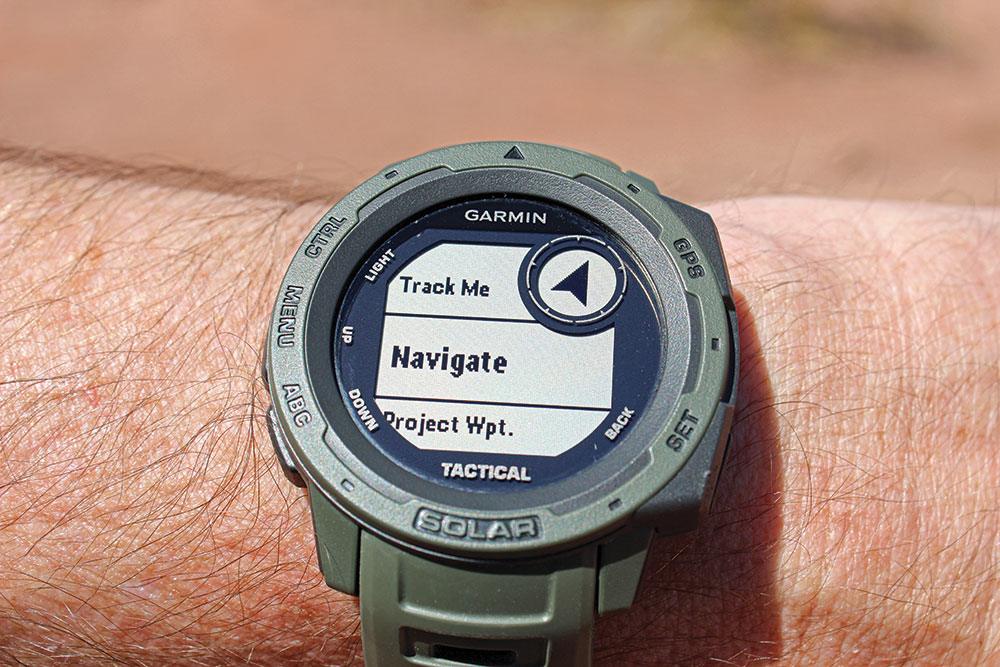
Fielded
There’s nothing like some good, old-fashioned ground truth to let you know how you’re going to like a product.
Nevertheless, I can easily say this is one of the best watches I’ve used in years. I used the Instinct primarily in northern Colorado during a variety of outdoor activities (slightly fewer than 400,000 steps as of this writing). However, I took full advantage of a week-long vacation in Arizona to add some variety.
“Garmin lists the Instinct Solar as being able to run GPS 145 hours straight via solar charging. It’s an enormous force-multiplier for someone with basic survival skills and a cool head.”
The Instinct starts out after a full charge, and the display (which is customizable) tells you there are 28 days of function left. To get the Instinct up to full capacity, the total charging time was only around two hours. Depending on feature use, this slowly ticks down until it’s time to charge again. I turned most features off and easily got 27 days out of the watch with intermittent solar buffing to the battery.

To test the solar-charging capability more directly, I sat the watch in the sun while it indicated that there were 10 days remaining. After two and a half hours of direct exposure to the sun, the countdown timer when up to 15 days. This was impressive to me.
In addition, smart features reveal intelligent design: Once, while hiking, I was using the sports app to keep track of everything. The battery was about to die. The watch notified me a couple times about this before it finally did die—but it still saved the data for the hike I was on.
“I turned most features off and easily got 27 days out of the watch with intermittent solar buffing to the battery.”
The sports apps were where I spent a great deal of time. During a pool swim in Arizona, I was able to track elapsed time, as well as distance. Use of these apps during mountain biking or running tells you much the same. The Instinct pairs with the Garmin Connect app on your phone and pools a lot of your data for analysis. You can see your activities (hikes, bikes, swims, etc.), as well as your daily step totals, stairs climbed, heart rate (resting and peak), pulse oximetry and sleep cycles. You can even set up the Instinct to track your oximetry while you sleep. As a result, this watch could give you a clue if you’re suffering from sleep apnea.
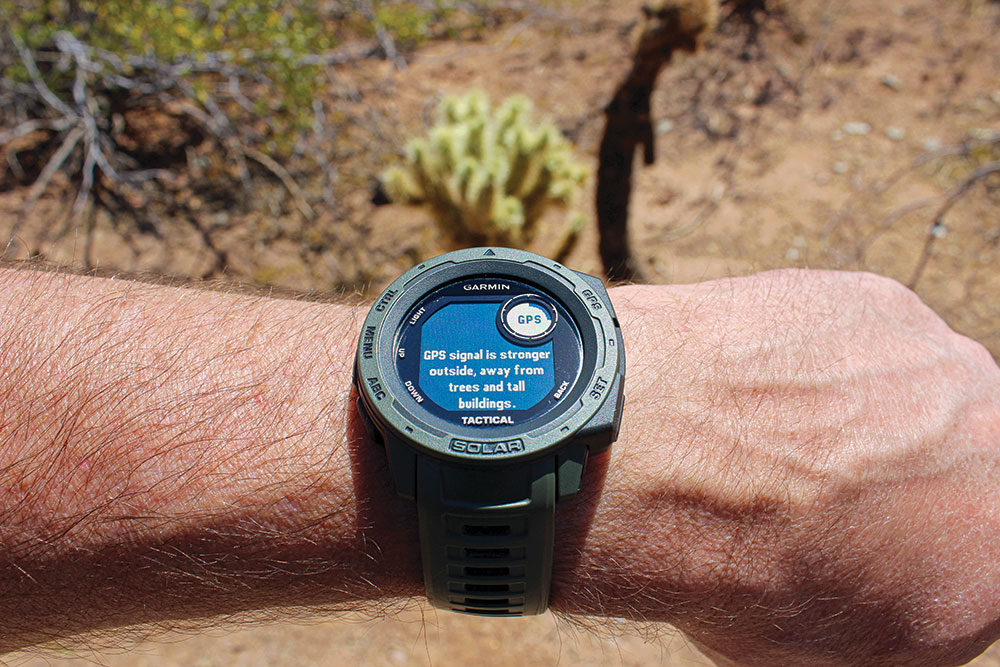
Tracking
One of the most important features for me was testing out the Instinct’s GPS capability.
During a brief hike of Hole in the Rock Trail at Papago Park outside Phoenix, Arizona, I set a waypoint in the Instinct and started recording my hiking activity in sports apps. One of the things I appreciated—from a tactical standpoint—was the watch giving me latitude and longitude when I set the waypoint. It did so in a couple of different formats. Being able to communicate these directly to a pilot or ground-based rescuer would enable them to route directly to you, regardless of most conditions.
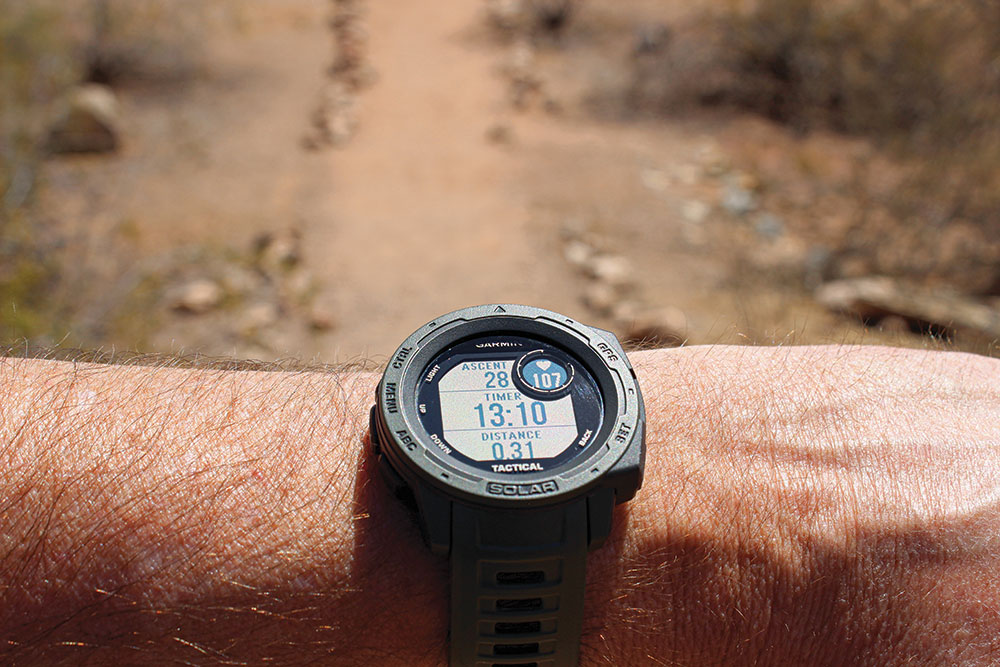
Upon reaching the destination, I lounged in some shade to avoid most of the midday heat before starting back. I told the Instinct to go back to the original waypoint I’d set at the beginning of the trail. It did an outstanding job of doing just that. Not only was there an arrow in the circular area of the display that told me the direction to travel, there was also a line showing my travel direction destination as a flag. The display on the face was actually giving me a distance countdown as I approached my original destination and finally let me know—with an alert—once I’d arrived.
“I have a lot of watches, but none of them can do what the Garmin Instinct Tactical can.”
This might seem to be a superfluous advisory, but visibility (for example, night or snow) and other factors could have changed since I left. The performance of the watch was marvelous!
Force-Multiplier
I have a lot of watches, but none of them can do what the Garmin Instinct Tactical can. At a current MSRP of $449.99, it’s a good value, especially when you consider its capabilities.
While the Garmin Fenix 6 might have an amazing wealth of other options, as far as software goes, it can’t compete with the solar capabilities of the Instinct Solar Tactical for battery life and solar-charging capability.
There are many scenarios in my preparatory-obsessed mind during which the Instinct might even save your life: Set a waypoint at your vehicle during a hike, and you’re almost assured of not getting lost. Set a waypoint at base camp, and you’ll always be able to get there from spike camp.

Previous versions of GPS watches without this amazing solar capability were limited in their feasibility as self-rescue tools.
Garmin lists the Instinct Solar as being able to run GPS 145 hours straight via solar charging. It’s an enormous force-multiplier for someone with basic survival skills and a cool head. Even with limited mobility, the capacity to charge the watch by leaving it in the sun allows the user to keep benefiting from its navigational assistance—while continuing to monitor other critical health information such as heart rate and oxygen saturation.
Garmin has done a marvelous job of building essential features into a durable chassis—and keeping it within an affordable price range. The average hunter, hiker, biker, walker or outdoor enthusiast should rejoice!
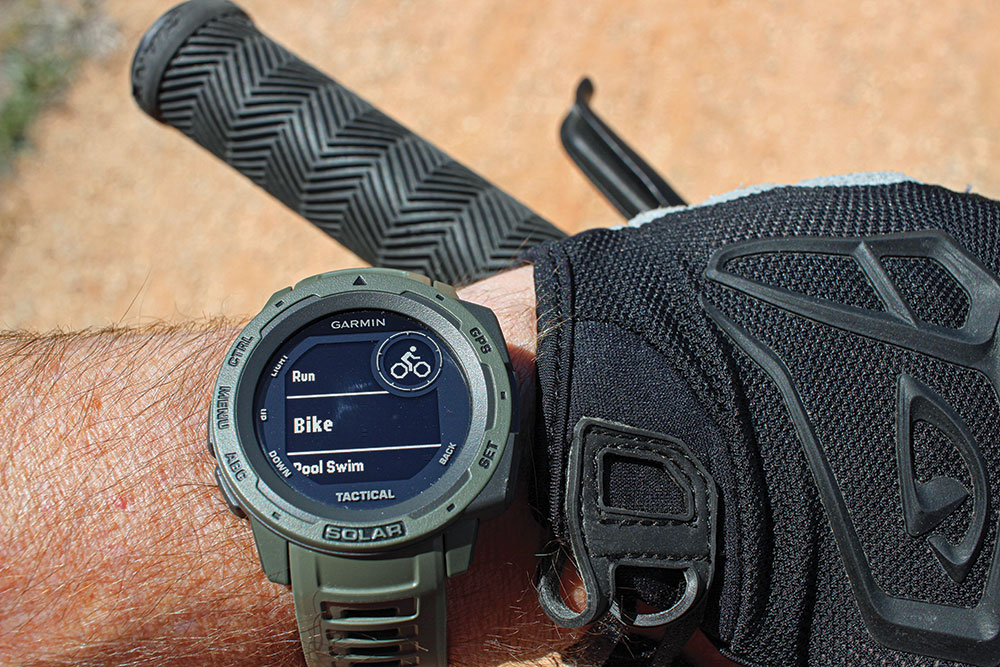
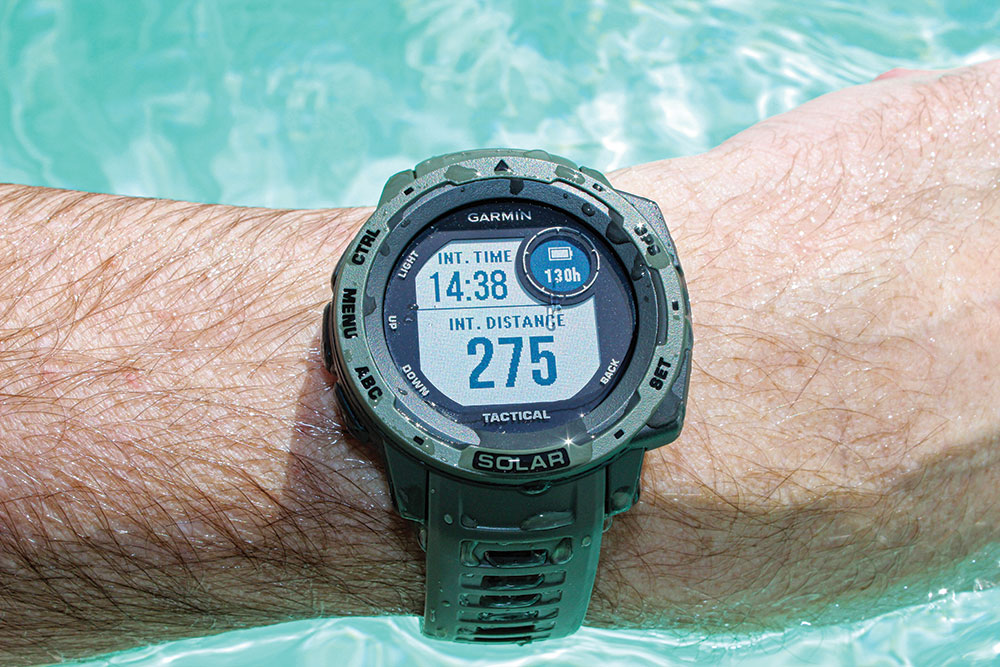

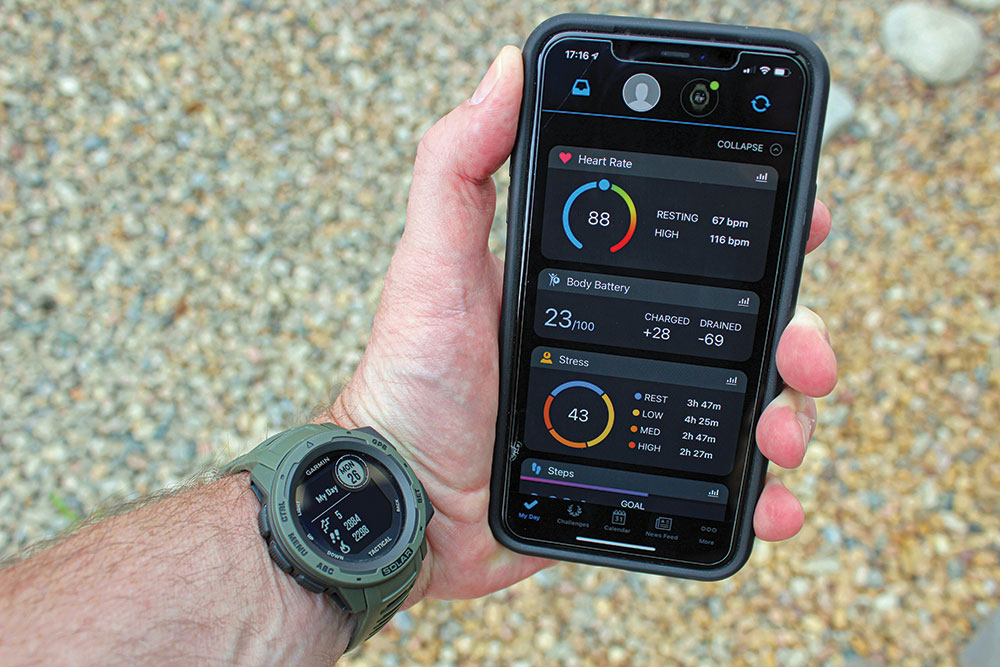

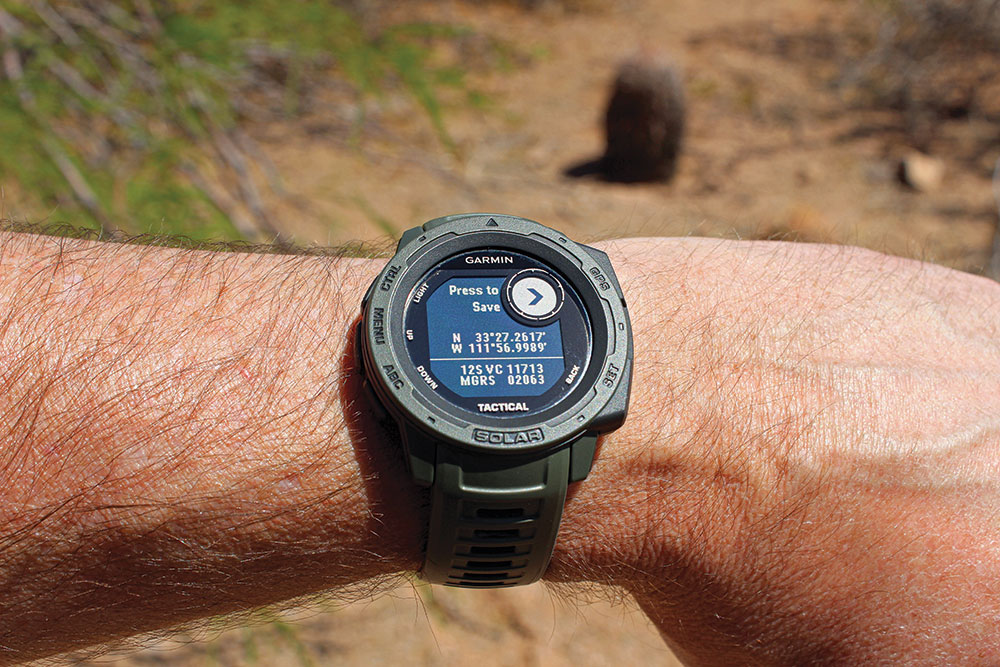

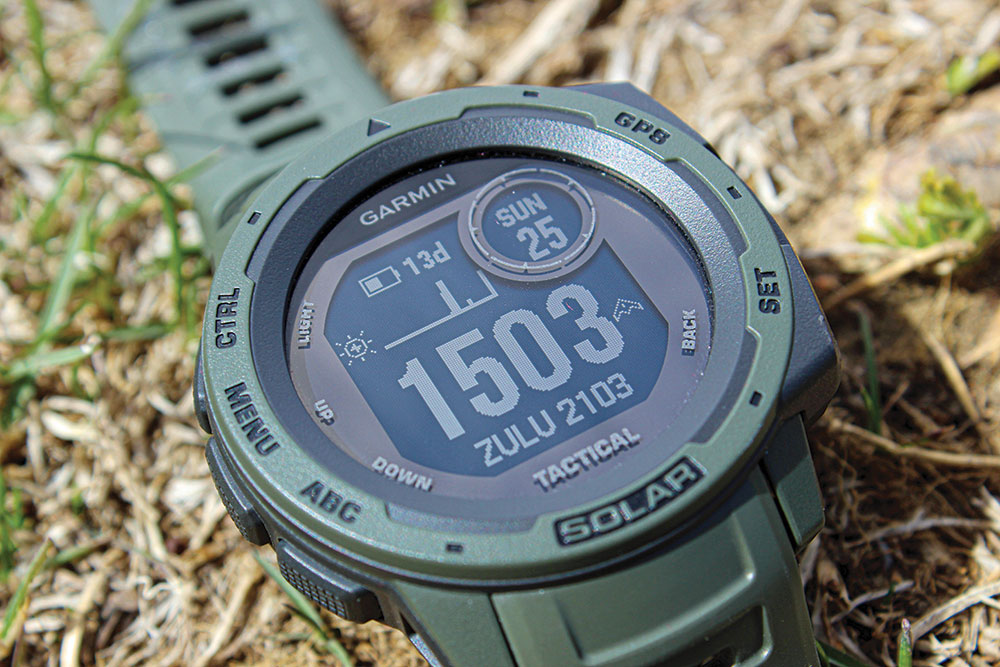
Source
Garmin
Garmin.com
A version of this article first appeared in the September 2021 print issue of American Outdoor Guide.


